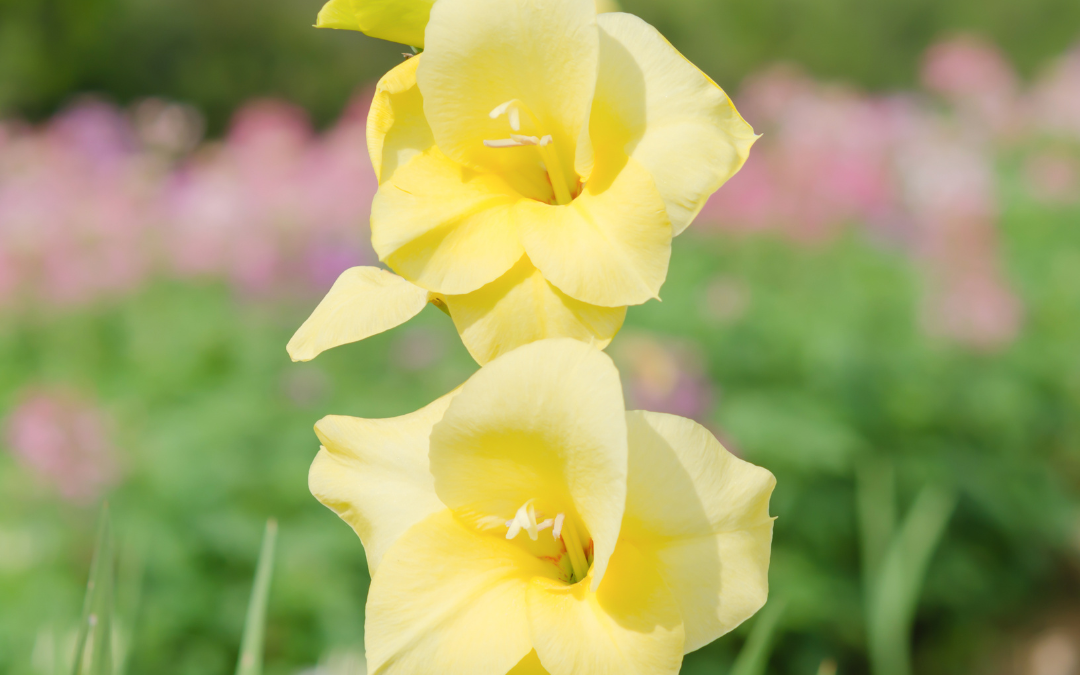In this article, we will discuss everything you need to know about planting your own gladiolus in Canada. We will cover topics such as the meaning of the flower, its history, how to grow it, and more! With this information in hand you can confidently plant your own gladiolus and enjoy its beauty for years to come.

About Gladioulus
A member of the Iridaceae family, Gladiolus is typically referred to as “glads”. Available in various colors and sizes with huge spikes with a range of colors. The size of their flowers vary greatly – with some blooms being less than 3 inches across, while others can even exceed 5 inches in diameter! Popular varieties include…
Grandiflora Hybrids – The classic type of gladioli that create lots of big (5- to 6-inch) blooms in various hues. The flower stalks they produce can reach up to 4 feet tall and they can endure cold temperatures in Zone 7.
Dwarf Grandiflora Hybrids – If you’re looking for something to plant in your containers or cutting gardens, these cute little glads are ideal. They have flowers that are half the size of Grandifloras, so you don’t need to worry about staking their short stalks. These plants can withstand the colder temperatures of Zone 7 during the winter months.
Nanus Hybrids – Tough and hardy, suitable for Zone 5. They are similar to Grandifloras in appearance yet produce fewer blooms. Growing no taller than two feet, they make an ideal choice for containers or any small area.
History

Although it is believed that the Gladiolus flower originated in South Africa, some varieties can be traced back to Europe and the Mediterranean. Currently, these flowers are widespread globally. Generally referred to as ‘sword lilies’ because of their sharp and sword-like leaves. It’s also worth noting that the name “gladiolus” comes from Latin gladius, meaning ‘sword.’ Initially, people used some species of flowers for medicinal purposes. But, it is now known that parts of the flowers are toxic and can cause allergies or skin irritation when touched.
Symbolism

Gladiolus is a genus of perennial flowering plants that come in a range of vibrant colours. Every colour of gladiolus has a unique symbolism associated with it. With its beautiful blooms, gladiolus is an excellent choice for expressing emotions with flowers.
Red Gladioulus – Gifted for Valentine’s Day or wedding anniversaries as a symbol of passion, romance and love.
White gladiolus – Are a perfect way to convey clear feelings of clarity and serenity. For times like weddings, funerals or religious events, they make for an ideal present that represent purity and spirituality.
Yellow/Orange – Are known to bring good luck, joy and symbolize positive relationships & friendships.
Purple gladiolus – Symbolize grace, class, and beauty. They’re often presented as gifts during special occasions such as a new job or when someone moves to a new home.
Pink gladiolus – Representative of femininity, gentleness, and love. They are frequently offered as a gift on Mother’s Day date nights, or birthdays.
How To Grow Gladiolus

Taller plants like Gladiolus may need to be staked and are usually placed at the back of a garden to provide contrast against their shorter counterparts. This arrangement can bring out the best qualities of both types of plants and help create a stunning display.
Sun – For beautiful flowers, glads should be planted in an area where they receive 6-8 hours of direct sunlight per day.
Soil – Gladioli do best in well-drained soil that’s moderately fertile. They will not do well in heavy, soggy soil. Mix compost (humus) into your soil to improve its consistency and fertility.
Space – Plant gladioli up to 12-18 inches deep and allow 1 inch of space between each plant for root development.
Pests – Gladiolus corm rot, also known as Fusarium wilt, is an issue that can cause significant damage to gladioli. Other problems may include gray mold, viruses, aster yellows, spider mites, thrips and aphids. In order to prevent the spread of these issues and keep your plants healthy and thriving it is important to be aware of the signs of each one and how to treat them.


